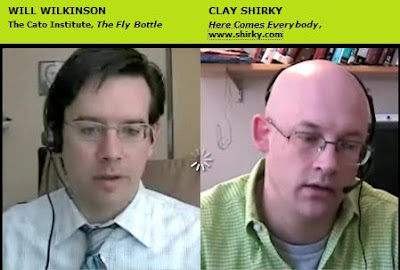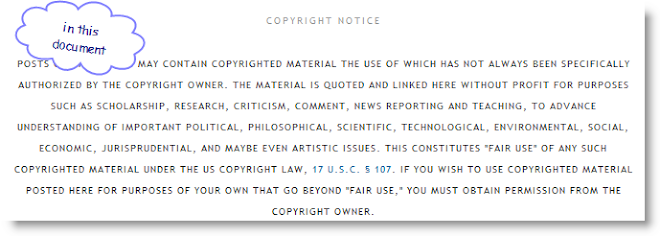Tuesday, April 29, 2008
YouTube Insight
Whether a YouTube video has 10 views or 10,000,000, people always want to know the same thing: who's watching this? Where do viewers come from? How did they find my video?
Finally, we have some answers. Today we're releasing YouTube Insight, a free tool that enables anyone with a YouTube account to view detailed statistics about the videos that they upload to the site. For example, uploaders can see how often their videos are viewed in different geographic regions, as well as how popular they are relative to all videos in that market over a given period of time. You can also delve deeper into the lifecycle of your videos, like how long it takes for a video to become popular, and what happens to video views as popularity peaks.
How does this help you? Well, using these metrics, you can increase your videos' view counts and improve your popularity on the site. For instance, you might learn that your videos are most popular on Wednesdays, that you have a huge following in Spain, or that new videos that play off previous content become more popular more quickly. With this information, you can concentrate on creating compelling new content that appeals to your target audiences, and post these videos on days you know these viewers are on the site. (Maybe even post your next video in Spanish?) And for those of you who are also partners, the more popular a video is, the more advertising revenue it can generate.
We'll be making new features and additional information available fairly quickly -- like a specific breakdown of how viewers discovered the video -- so keep an eye out as we roll out new features. As for now, you can find currently available metrics by clicking under the "About this Video" button under "My account > Videos, Favorites, Playlists > Manage my Videos."
The YouTube Team
Sunday, April 27, 2008
Clay Shirky & Will Wilkinson

Clay Shirky is the author of Here Comes Everybody: The Power of Organizing Without Organizations
- self-exemplifying the point (1:08)
- wikipedia (4:45)
Update: Clay Shirky Speech: "Gin, Television and Social Surplus"
Saturday, April 26, 2008
You Didn’t Realize It, But You Really Want Those Twitter Messages In Your Calendar
Belgium-based Twistory
 launched into private beta today at MobileWebCamp
launched into private beta today at MobileWebCamp .
. It’s a very simple tool, built by Tijs Vrolix to show off his coding and design skills: Subscribe to messages from any Twitter user in any popular desktop or online calendaring application (iCal, Google Calendar, etc.). Those messages are then automatically added to the calendar, at the appropriate day and time.
to show off his coding and design skills: Subscribe to messages from any Twitter user in any popular desktop or online calendaring application (iCal, Google Calendar, etc.). Those messages are then automatically added to the calendar, at the appropriate day and time.
Useful? I don’t know. It’s certainly useful to closely monitor/stalk people (or yourself). If you want to add my daily words of wisdom to your calendar, my page is here (which also includes a graph of total twitter usage by day.
(which also includes a graph of total twitter usage by day.
Friday, April 11, 2008
Computerworld - Windows is 'collapsing,' Gartner analysts warn
Calling the situation "untenable" and describing Windows as "collapsing," a pair of Gartner analysts this week said Microsoft must make radical changes to the operating system or risk becoming a has-been.
In a presentation at a Gartner-sponsored conference in Las Vegas, analysts Michael Silver and Neil MacDonald said Microsoft has not responded to the market, is overburdened by nearly two decades of legacy code and decisions and faces serious competition on a whole host of fronts that will make Windows moot unless the Redmond, Washington developer acts.
"For Microsoft, its ecosystem and its customers, the situation is untenable," said Silver and MacDonald in their prepared presentation, titled "Windows Is Collapsing: How What Comes Next Will Improve."
Among Microsoft's problems, the pair said, is Windows' rapidly-expanding code base, which makes it virtually impossible to quickly craft a new version with meaningful changes. That was proved by Vista, they said, when Microsoft -- frustrated by lack of progress during the five-year development effort on the new OS -- hit the "reset" button and dropped back to the more stable code of Windows Server 2003 as the foundation of Vista.
"This is a large part of the reason [why] Windows Vista delivered primarily incremental improvements," they said. In turn, that became one of the reasons why businesses pushed back Vista deployment plans. "Most users do not understand the benefits of Windows Vista or do not see Vista as being better enough than Windows XP to make incurring the cost and pain of migration worthwhile."
Other analysts, including those at rival Forrester Research, have pointed out the slow move toward Vista. Last month, Forrester said that by the end of 2007 only 6.3 percent of the 50,000 enterprise computer users it surveyed were working with Vista. What gains Vista made during its first year, added Forrester, appeared to be at the expense of Windows 2000; Windows XP's share hardly budged.
The monolithic nature of Windows -- although Microsoft talks about Vista's modularity, Silver and MacDonald said it doesn't go nearly far enough -- not only makes it tough to deliver a worthwhile upgrade, but threatens Microsoft in the mid- and long-term.
Users want a smaller Windows that can run on low-priced -- and low-powered -- hardware, and increasingly, users work with "OS-agnostic applications," the two analysts said in their presentation. It takes too long for Microsoft to build the next version, the company's being beaten by others in the innovation arena and in the future -- perhaps as soon as the next three years -- it's going to have trouble competing with Web applications and small, specialized devices.
"Apple introduced its iPhone running OS X, but Microsoft requires a different product on handhelds because Windows Vista is too large, which makes application development, support and the user experience all more difficult," said Silver and MacDonald.
"Windows as we know it must be replaced," they said in their presentation.
Their advice to Microsoft took several forms, but one road they urged the software giant to take was virtualization. "We envision a very modular and virtualized world," said the researchers, who spelled out a future where virtualization -- specifically a hypervisor -- is standard on client as well as server versions of Windows.
"An OS, in this case Windows, will ride atop the hypervisor, but it will be much thinner, smaller and modular than it is today. Even the Win32 API set should be a module that can be deployed to maintain support for traditional Windows applications on some devices, but other[s] may not have that module installed."
Backward compatibility with older, so-called "legacy" applications, should also be supported via virtualization. "Backward compatibility is a losing proposition for Microsoft; while it keeps people locked into Windows, it also often keeps them from upgrading," said the analysts. "[But] using built-in virtualization, compatibility modules could be layered atop Win32, or not, as needed."
Silver and MacDonald also called on Microsoft to make it easier to move to newer versions of Windows, re-think how the company licenses Windows and come up with a truly modular operating system that can grow or shrink as needed.
Microsoft has taken some new steps with Windows, although they don't necessarily match what the Gartner analysts recommended. For instance, the company recently granted Windows XP Home a reprieve from its June 30 OEM cut-off, saying it would let computer makers install the older, smaller operating system on ultra-cheap laptops through the middle of 2010.
It will also add a hypervisor to Windows -- albeit the server version -- in August, and there are signs that it will launch Windows 7, the follow-on to Vista, late next year rather than early 2010.
Tuesday, April 08, 2008
Google Page Creator
Create your own web pages, quickly and easily.
Google Page Creator is a free online tool that makes it easy for anyone to create and publish useful, attractive web pages in just minutes.
- No technical knowledge required.
Build high-quality web pages without having to learn HTML or use complex software.
- What you see is what you'll get.
Edit your pages right in your browser, seeing exactly how your finished product will look every step along the way.
- Don't worry about hosting.
Your web pages will live on your own site at http://yoursitename.googlepages.com
Google Page Creator is a Google Labs project, and is still in an early testing phase. If you're interested in taking it for a test drive, login with your Gmail account to begin making pages. If you don't have a Gmail account and you have a mobile phone, you can sign up here. We invite you to let us know what you think by sending us your feedback and suggestions.
Monday, April 07, 2008
Thursday, April 03, 2008
Windows Vista Fix
***
well, in case it happens again, here is what worked:





OK, I think I have found a solution.
For a while I've had a suspicion that this was related to registry permissions, and I found a post on one of the Adobe forums for the same behaviour, but related to a completely different product - in that case, Adobe Acrobat. Here is the proposed solution (extracted from http://www.adobeforums.com/webx/.3bc34e46). Please note that this approach involves making system-wide security changes, so make sure you create a restore point first. I accept no responsibility whatsoever for how this may affect your system. Proceed at your own risk.
It concernes VISTA OS and registry permissions. It seem that one of the updates caused this problem. The System and the administrators need full access to the registry keys to allow any instalation to complete. If it is corrupted the program keeps reinstalling. I already had to do it to install properly Visual Studio 2005, so I tried it again to solve the Acrobat reinstalling problem and it worked. This are the steps :
1. Make a backup of your registry (i.e. create a new resotre point - PG)
2. Now you need to download a program called subinacl.exe from microsoft. This is the link :
http://www.microsoft.com/downloads/details.aspx?FamilyID=e8ba3e56-d8fe-4a91-93cf-ed6985e3927b&displaylang=en
3. Install subinacl.exe.
4. Copy the code below into a text file and then name the text file reset.cmd
--------------------- THIS IS THE CODE TO COPY --------------------
cd /d "%ProgramFiles%\Windows Resource Kits\Tools"
subinacl /subkeyreg HKEY_LOCAL_MACHINE /grant=administrators=f /grant=system=f
subinacl /subkeyreg HKEY_CURRENT_USER /grant=administrators=f /grant=system=f
subinacl /subkeyreg HKEY_CLASSES_ROOT /grant=administrators=f /grant=system=f
subinacl /subdirectories %SystemDrive% /grant=administrators=f /grant=system=f
subinacl /subdirectories %windir%\*.* /grant=administrators=f /grant=system=f
secedit /configure /cfg %windir%\inf\defltbase.inf /db defltbase.sdb /verbose
-----------------------------------------------------------------
Some people reported that this kind of reset can be long. I did it under "Safe Mode", and it was about 15 minutes, but other users complained about the long time it took.
Once finished, reboot the computer and try (running the program that keeps installing).
This solution corrected several problems linked to the registry corruption in my case.
Good Luck and hope it helps.
This solution worked for me.

